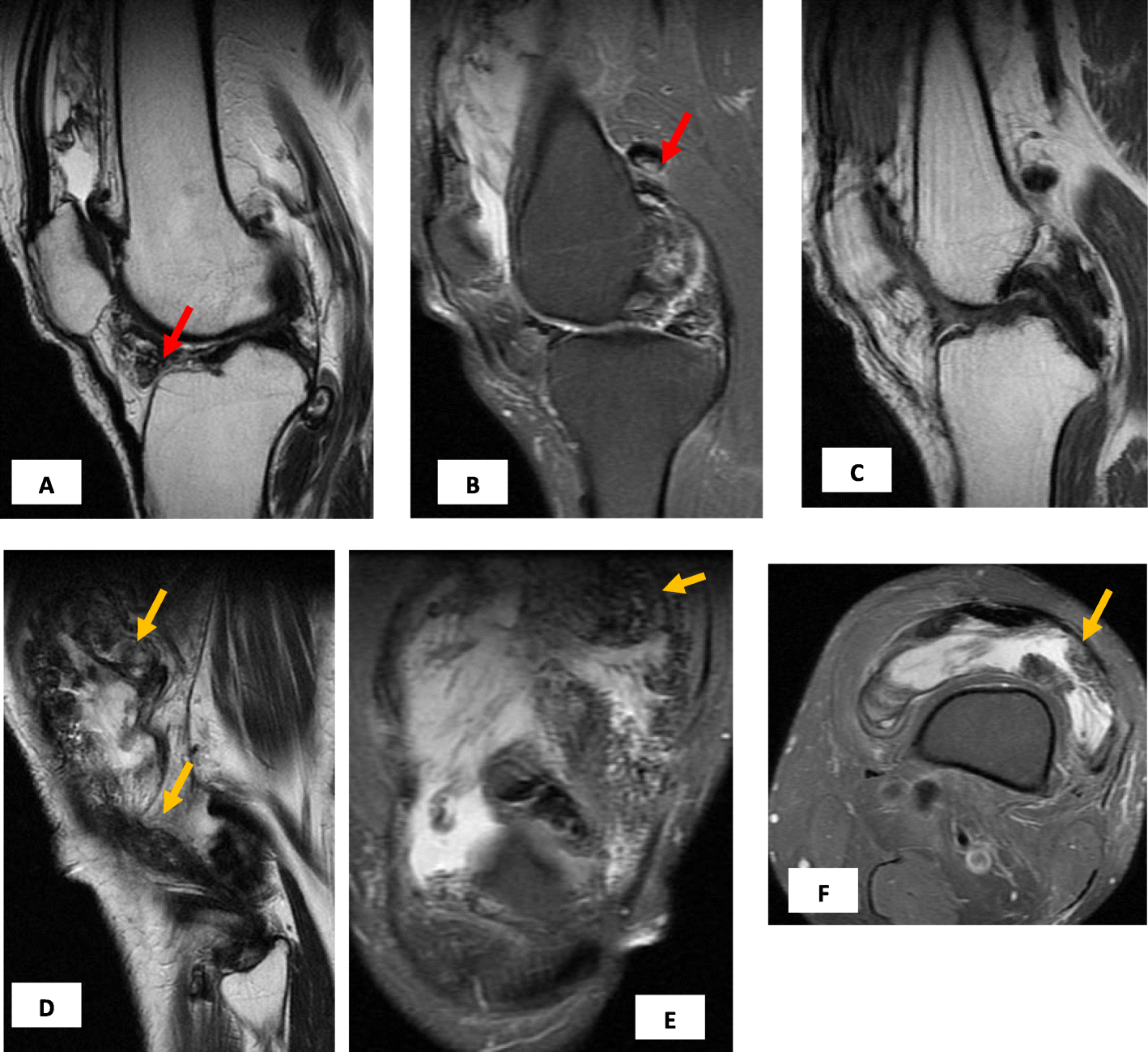Synovial chondrosarcoma

Synovial chondrosarcoma refers to a very rare malignant cartilaginous neoplasm arising from the synovium.
Epidemiology
There can be a wide spectrum in age of presentation from from 25-75 years of age. A slight male predilection may be present.
Pathology
It can either as a primary lesion (primary synovial chondrosarcoma) or secondary to synovial chondromatosis. The relative risk for progression from synovial chondromatosis to malignancy is estimated to be 5% or less.
Synovial chondrosarcoma and synovial chondromatosis can have a similar appearance at microscopy
Location
Can vary but most cases involve the knee, hip, or shoulder. Rare occurrences in smaller joints have been reported.
Radiographic features
Can be very similar to synovial chondromatosis.
Plain radiograph
May be seen as a juxta-articular region with pattern of cartilaginous calcifications similar to synovial chondromatosis.
MRI
Signal characteristics of particular nodules include
- T1: low to intermediate signal intensity of nodules
- T2: high signal intensity in general with hypointense calcifications
On contrast to synovial chondromatosis, some imaging features are suggestive of the presence of the malignant neoplasm.
- may erode cortical bone: synovial chondrosarcoma often demonstrates cortical destruction with marrow invasion
- extra-articular extension is more often present in more aggressive lesions, although it is not a specific sign of malignancy
- metastases are indicative of malignancy.
Treatment and prognosis
It is a malignant lesions which can metastasize. Treatment is similar to that of other sarcomas and includes amputation or extra-articular resection with wide surgical margins.
See also
Siehe auch:

 Assoziationen und Differentialdiagnosen zu synoviales Chondrosarkom:
Assoziationen und Differentialdiagnosen zu synoviales Chondrosarkom:
